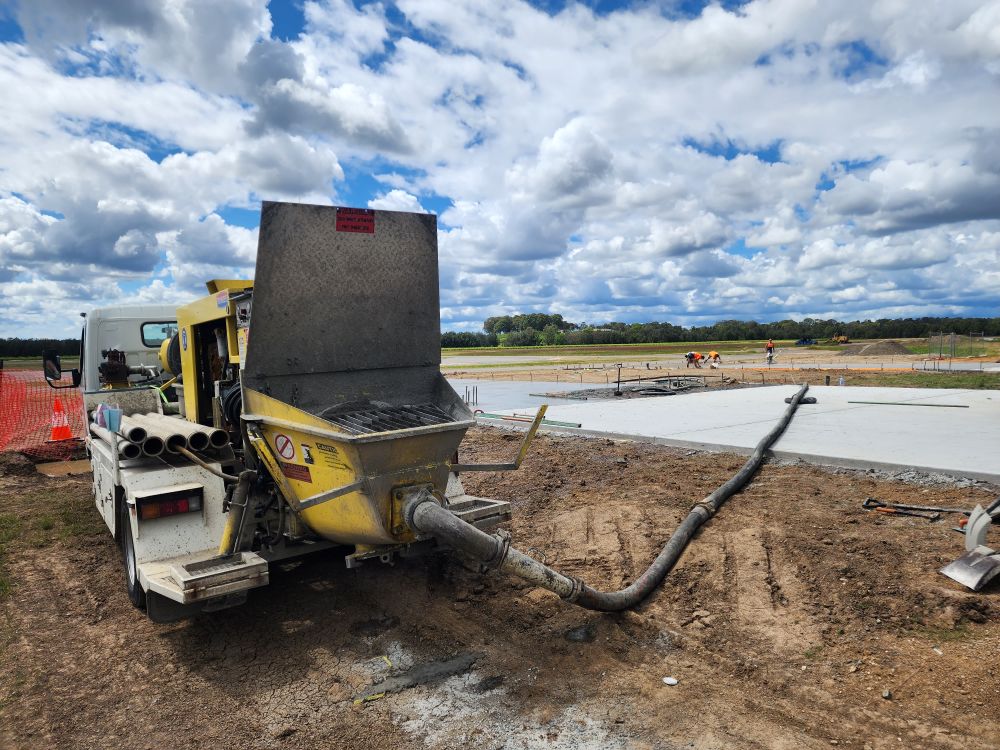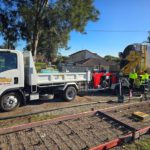Choosing Between Line Pump and Boom Pump Hire: What You Need to Know
When it comes to selecting the right concrete pump for your project, understanding the differences between line pumps and boom pumps is crucial. Line pumps are ideal for residential projects and sites with limited access, while boom pumps excel in handling high-volume pours and reaching longer distances. Your decision should be based on factors such as site accessibility, the scale of the pour, and the required delivery speed. By evaluating these elements, you can ensure you choose the most suitable pump for your specific needs.

Advantages of Using Line Pumps for Your Concrete Needs
Line pumps are designed to deliver concrete efficiently through either steel pipes or flexible hoses. They are particularly well-suited for residential construction sites, backyards, footpaths, and other projects with limited access. Their compact size and quick setup make them an excellent choice for smaller pours, allowing you to maximise efficiency without compromising on quality. By choosing line pumps, you can significantly reduce the need for barrows and additional labour on jobs where a boom truck may not be able to get close enough to the pour site, streamlining your workflow and saving you valuable time and resources.
Maximising Efficiency with Line Pumps in Restricted Spaces
When working in tight spaces, line pumps provide a reliable solution for moving concrete through flexible hoses. Construction crews frequently utilise these pumps for residential slabs, footings, and other smaller pours where larger boom trucks cannot access. Their quick setup time and lower operational costs make them highly advantageous for projects with limited space, such as narrow driveways and congested streets. By opting for a line pump, you can ensure that your project runs smoothly, without the delays and complications that often accompany larger equipment.
Identifying the Perfect Scenarios for Boom Pump Usage
Boom pumps are mounted on trucks and feature extendable arms that can reach over buildings, into foundations, or to elevated areas within formwork. This makes them ideal for commercial sites, large slabs, or any high-volume pours where efficiency is key. By using a boom pump, you can save significant time, as operators can employ remote controls for precise placement of concrete, thereby reducing both labour costs and material waste. If your project demands a large volume of concrete and extensive reach, a boom pump is undoubtedly the right tool to achieve your objectives effectively and efficiently.
Guidelines for Selecting the Right Concrete Pump for Your Project
- For small to mid-sized pours: Opt for a line pump for its efficiency and cost-effectiveness.
- For large slabs or commercial projects: Always choose a boom pump to handle the volume.
- In confined job sites: A line pump is ideal for fitting where boom pumps cannot reach.
- When needing to reach over structures: A boom pump can cover distances quickly and effectively.
Make Informed Decisions with Hunter Concrete Pumps
Begin your selection process by assessing your site conditions. If access is limited or the pour is relatively small, a line pump is typically more efficient and cost-effective. However, for larger projects involving multi-level buildings, significant infrastructure work, or heavy pours, a boom pump excels in delivering higher volumes of concrete swiftly and effectively, eliminating the need for excessive handling.
In the Hunter Valley and Newcastle regions, we frequently see line pumps utilised for projects like driveways, footings, and pool constructions. Conversely, boom pumps are preferred for tasks that require high volume or vertical reach, such as bridge decks, multi-storey builds, and industrial pads. By understanding these applications, you can make the best choice for your concrete pumping needs.



Your insights into the distinctions between line pumps and boom pumps shed light on a topic that many might overlook when planning concrete projects. The decision-making process between these two options is indeed nuanced, and I appreciate how you’ve highlighted the practicalities that come into play.
This is an insightful breakdown of the differences between line and boom pumps. I appreciate how you highlighted the importance of site accessibility and the scale of the pour in making a decision. From my experience working on various construction projects, I’ve found that line pumps really shine in tight situations. For instance, when we were pouring a foundation in a residential area where the street access was limited, the line pump allowed us to maneuver easily around obstacles and deliver the concrete without much hassle.
This is such an informative breakdown of the differences between line pumps and boom pumps! It’s interesting how the choice of equipment can really affect the overall efficiency of a project. In my experience, I’ve found that line pumps are a lifesaver in tight urban environments where access is a challenge. I remember helping out on a small residential project where the boom truck just wouldn’t fit down the narrow street. The line pump not only maneuvered easily but also saved us quite a bit of time on setup.
Ah, the classic showdown between line pumps and boom pumps, the Batman and Robin of the concrete world! It’s a love story of sorts when you think about it—each has its strengths that cater to different types of projects, yet they’re both crucial in their own right. I mean, who would want to choose between an unsung hero like line pumps and the flashy grandeur of boom pumps?
This post really highlights some important considerations when choosing between line and boom pumps. I’ve had my share of experiences with both, and it’s fascinating how the right pump can truly transform the efficiency of a project.
This is a fantastic breakdown of the different types of concrete pumps! I recently worked on a residential project where we chose a line pump, and it was a game changer. The flexibility of the hoses allowed us to navigate a tight backyard with ease, something a boom pump would have struggled with given the overhead limitations.
Your insights on the differences between line pumps and boom pumps highlight an often-overlooked aspect of construction logistics. When I was involved in a residential project last year, we faced significant access challenges in the backyard. Opting for a line pump not only streamlined our workflow but also minimized the disruption to the surrounding area—something that was essential in a neighborhood setting.
This is such an insightful discussion on the practicalities of concrete pumping! I can certainly relate to the importance of making the right choice between line pumps and boom pumps based on project specifics. A few years ago, I was involved in renovating a small backyard, and we faced quite a challenge with space constraints. In that situation, we opted for a line pump, and it made a world of difference. Its ability to maneuver through tight spaces was crucial, enabling us to complete the pour efficiently without damaging existing structures.
This is such an important topic, especially for those embarking on a concrete project! I’ve personally experienced the benefits of using line pumps on my property when we were pouring for a patio. The ease of maneuvering in tight spaces made all the difference. It’s interesting how the right equipment can transform a project, not only in terms of efficiency but also in achieving a quality finish.